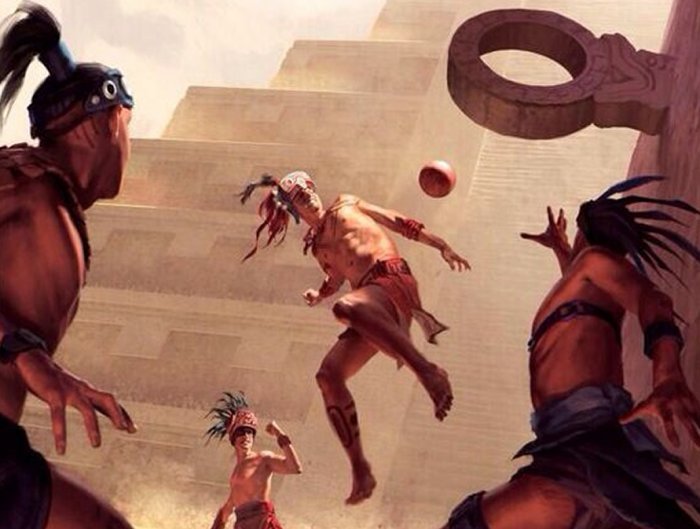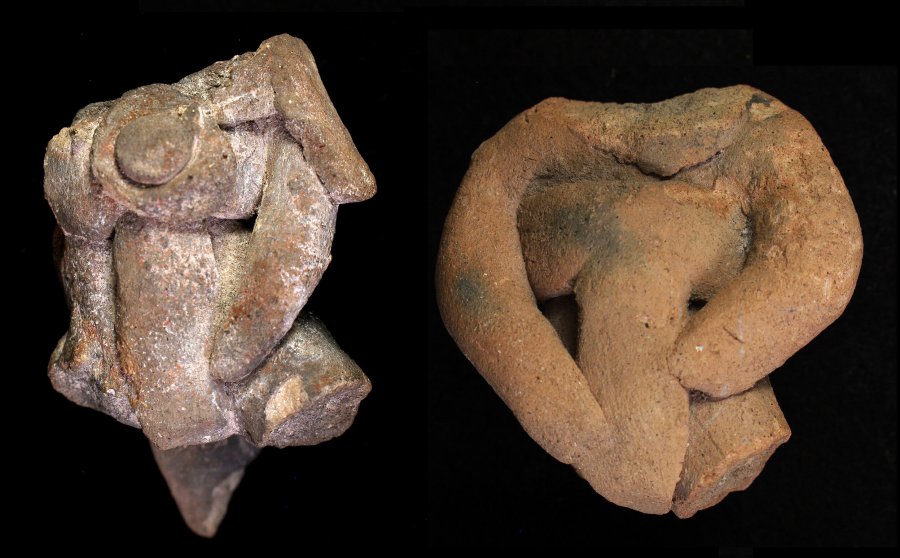Conny Waters – MessageToEagle.com – The rubber ball game is one of the most fundamental and iconic features of ancient Mesoamerica, a pre-Columbian cultural region encompassing Guatemala, Belize, most of Mexico, and western Honduras and El Salvador.

Pre-Columbian ball courts have been found in the center of almost every Maya city, throughout Mesoamerica
Two researchers Jeffrey P. Blomster and Víctor E. Salazar Chávez from George Washington University say there are more than 2300 probable ballcourts in this region and it means that once in the past the ballgame was important to ancient Mesoamericans.
However, both the origin of this brutal tradition and how it later evolved are not exactly explained. While one early ballcourt dates to 1650 BC from the Chiapas lowlands, other ballcourts have remained undocumented until a millennium later, suggesting that people were much less involved in the ballgame’s evolution.
Researchers recently excavated the earliest highland Mesoamerican ballcourt, dating to 1374 BC, at the site of Etlatongo, in the Mixtec region of Oaxaca.

Ceramic ballplayer figurines found above the ballcourt. Both wear thick belts or yokes with a loincloth; the figure on the left also has a collar (or pectoral), over the chest as an additional costume element. Credit: Formative Etlatongo Project
“Rich visual, iconographic, and architectural data from the two best-known Mesoamerican civilizations, the Maya and Aztec, emphasize the ritual and political focus of the ballgame, with symbolism that included the regeneration of life and the maintenance of cosmic order.
The origin narratives of the Maya, as codified in the Popol Vuh, implicate the ballgame, as part of a contest between heroic mortals and underworld deities, in the creation of the universe…” researchers write in their paper.
See also:
Millennia Old Ceremonial Stone Belt And Maya Pok-A-Tok Ball Game
What Does The Mexican Codex Map Represent?
Their conclusion published in the journal Science Advances is that the earliest highland ballcourt dates to the Early Formative (1500–1000 BC), nearly a millennium earlier than any previous highland architectural data and just over two centuries after the Paso de la Amada court.
Etlatongo ballplayer figurine. One of the numerous ceramic ballplayers from the termination event, the front view shows a thick belt or yoke with a loincloth project from it, while the profile view illustrates broken tripod support at the bottom, which allowed the figurine to stand, and whistle chamber above it. Image credit: Blomster and Salazar Chávez, Sci. Adv. 2020; 6 : eaay6964
Pre-Columbian ball courts have been found in the center of almost every Maya city, throughout Mesoamerica, as for example at Copán, as far south as modern Nicaragua.
Symbolic Meaning Of The Ballcourts
For the Maya people, the ball represented the Sun, the Moon, or planets and the court was the cosmos.
The ancient Mesoamericans considered Pok-A-Tok as the sacred game of the gods played on Earth and was not just a competitive sport.
It held a special place in the belief system of the ancient Central Americans and symbolized a mythical struggle of life, death, war, and sacrifice. The ball game was a ceremony dedicated to the memory of the ancestors and linked to agriculture and calendar cycles.
The ball courts were considered entrances to the underworld. The biggest ball court of all in Mesoamerica – 545 feet long and 225 feet wide – is located among the ruins of Chichén Itzá in Mexico’s Yucatán peninsula.
For the Aztecs, on the other hand, the traditional Mesoamerican ball game was part of the Aztec religious life.
It symbolized reenactment of the daily trial of the Sun rising after being born again from nighttime of fighting the underworld. There is also evidence that the playing of the ballgame was associated with human sacrifice.
Written by Conny Waters – MessageToEagle.com – AncientPages.com Staff Writer






